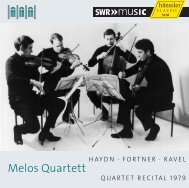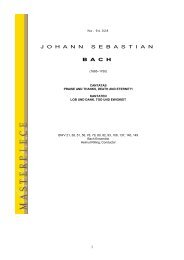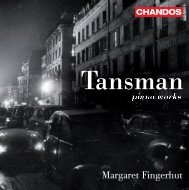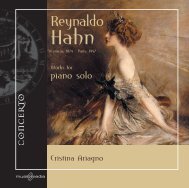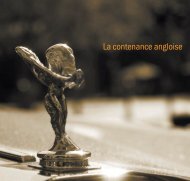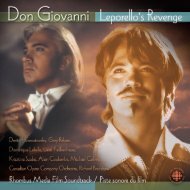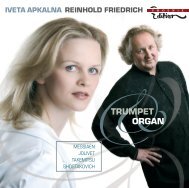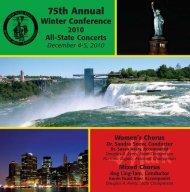gyri gyri gaga - Naxos Music Library
gyri gyri gaga - Naxos Music Library
gyri gyri gaga - Naxos Music Library
Sie wollen auch ein ePaper? Erhöhen Sie die Reichweite Ihrer Titel.
YUMPU macht aus Druck-PDFs automatisch weboptimierte ePaper, die Google liebt.
of Innsbruck influenced the text. The beginning<br />
of the song originally read „Zuruck muss ich dich<br />
lassen“ (I must go away and leave thee), and was<br />
addressed to a woman and not to the town. The<br />
heart-rending melody, appearing in the discantus<br />
in the setting recorded here, also found its way, in<br />
sacred double structures like O Welt ich muss dich<br />
lassen (O world I must leave thee) and Nun ruhen<br />
alle Wälder (Now all woods are resting), into the<br />
church song repertoire.<br />
The composer in the second song category,<br />
however, was freer in the choice of compositional<br />
method, which is shown in the texts narrating trueto-life<br />
and often erotic stories, containing simple<br />
word choices and verse forms. Here the range of<br />
the musical lay-out extends from artfully imitative<br />
sections to a simple, rhythmically declamatory<br />
movement. Although no written evidence exists,<br />
it seems that some of the melodies were already<br />
known and circulated before the emergence of the<br />
polyphonic setting. They were often taken up by<br />
several composers and worked in different ways,<br />
so that whole families of songs were produced.<br />
Already in the Glogauer Liederbuch (dating from<br />
c. 1480) an anonymous three-voice setting Ach<br />
Elslein liebes Elselein (O little Else, dear little Else)<br />
appeared. This melody is represented on the CD<br />
by the Quodlibet of Matthias Greiter and in a<br />
setting by Ludwig Senfl.<br />
The Swiss-born Ludwig Senfl was a pupil of<br />
Isaac and worked as composer to the court of<br />
the Bavarian Duke Wilhelm IV. The composition<br />
of songs had a particularly important place in his<br />
output, and today there are still more than 250<br />
songs by Senfl extant. In Ich stund an einem<br />
Morgen (I stood one morning), in which the<br />
eavesdropping narrator tells of the dawn farewell<br />
of two lovers, Senfl alone has conceived seven<br />
settings with different characters and numbers<br />
of voices. In the recorded version the melody is<br />
heard in the outer discantus and bass voices with<br />
parallel tenths, and in a rhythmically varied form<br />
in the tenor. The sole freely composed voice,<br />
the alto, is very turbulent with numerous runs<br />
of small note values, which obviously opens up<br />
the possibility of instrumental performance (in<br />
this recording that part is undertaken by the lute).<br />
Senfl displays another variation in the use of a<br />
cantus firmus in polyphonic settings, in Wann ich<br />
des morgens früh aufsteh (When I rise early in<br />
the morning). The melody is heard four times in<br />
succession, though with each run-through it has<br />
wandered into a different voice. It is sung first by<br />
the tenor, followed by the discantus, alto and bass.<br />
In each run-through the voices not carrying the<br />
melody accompany in a free line, and finally the<br />
tenor, as at the beginning, again undertakes the<br />
last line of the song.<br />
The rise in the tradition of German song in the<br />
sixteenth century coincides with the technical<br />
development of printing music. Already by the<br />
middle of the fifteenth century printing with<br />
movable type had created the possibility of<br />
disseminating texts, but around 1500 the new<br />
medium first began to be used for polyphonic<br />
music. While the initial printing of songs took<br />
place in courtly circles, the direction changed in<br />
the second quarter of the sixteenth century when<br />
collections more to the taste of the sophisticated<br />
middle class were printed. The number of drinking<br />
and jocular songs increased compared to the<br />
formal love songs and laments. A particular kind<br />
of these pieces was represented by the Quodlibet<br />
11



